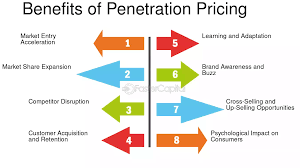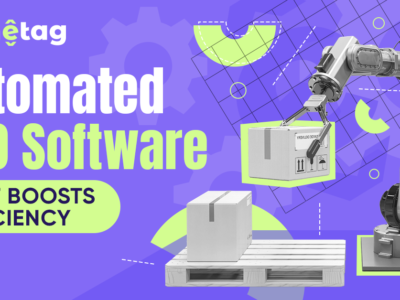
Benefits of Penetration Pricing
What is Penetration Pricing?
Penetration pricing is a marketing strategy where a business sets a low initial price for a new product or service to attract customers quickly. The goal is to gain market share rapidly by enticing price-sensitive consumers and creating a strong customer base from the outset. This approach is particularly effective in competitive markets where consumers have numerous options, and businesses need to differentiate themselves quickly.
Check Out: Penetration Pricing Strategy
Benefits of Penetration Pricing
1. Rapid Market Entry
One of the primary advantages of penetration pricing is the ability to enter a market swiftly. By offering a low price, companies can attract customers almost immediately, establishing brand awareness and presence in a crowded marketplace.
2. Increased Market Share
With a lower price point, businesses can capture a larger share of the market. This strategy encourages more consumers to try the product, leading to a significant increase in sales volume and market dominance.
3. Attraction of Price-Sensitive Customers
Penetration pricing is particularly effective in attracting price-sensitive customers who may be hesitant to purchase at higher prices. This strategy can convert non-customers into loyal buyers by offering them a compelling deal.
4. Discouragement of Competitors
By setting low prices, existing competitors may be discouraged from entering the market. Potential entrants might perceive the market as unprofitable due to low margins, allowing established businesses to maintain their market share with less competition.
5. Building Brand Loyalty
Customers who enjoy a product at a lower price may develop loyalty to the brand. Once they are satisfied with their experience, they are more likely to make repeat purchases, even when prices increase in the future.
6. Economies of Scale
As sales volume increases through penetration pricing, businesses can achieve economies of scale. Producing larger quantities can reduce the cost per unit, ultimately improving profit margins over time.
7. Cross-Selling Opportunities
A larger customer base creates opportunities for cross-selling and upselling. Once customers are engaged, businesses can promote additional products or services, boosting overall revenue.
8. Enhanced Customer Feedback
With more customers trying the product, businesses can gather valuable feedback that informs product improvements and future marketing strategies. This insight is crucial for adapting to changing consumer preferences.
9. Long-Term Profitability Potential
Although penetration pricing may result in initial lower profits, the long-term benefits can outweigh these drawbacks. By building a loyal customer base, businesses can transition to higher prices and sustain profitability.
10. Positive Word-of-Mouth Marketing
Satisfied customers are likely to share their positive experiences with friends and family. This word-of-mouth marketing can significantly increase brand visibility and attract new customers without additional marketing costs.
Conclusion
Penetration pricing is a strategic approach that offers numerous benefits, especially for new products entering competitive markets. By attracting a broad customer base and building loyalty, businesses can position themselves for long-term success. While there are challenges to consider, the advantages of this pricing strategy make it a powerful tool for growth and market penetration.
Related: Best Digital Marketing Courses in Mumbai
FAQs related to penetration pricing:
1. What is penetration pricing?
Penetration pricing is a marketing strategy where a business sets a low initial price for a new product to attract customers quickly and gain market share.
2. How does penetration pricing benefit new businesses?
It allows new businesses to enter competitive markets swiftly, attract a large customer base, and build brand recognition without significant initial investment.
3. Can penetration pricing work in all markets?
While it can be effective in many markets, penetration pricing is most successful in competitive environments with price-sensitive consumers.
4. What are the risks of using a penetration pricing strategy?
The main risks include potential initial losses due to low prices, difficulty in raising prices later, and attracting customers who may switch to competitors for lower prices.
5. How long should a company maintain low prices?
The duration of low pricing can vary, but it should be long enough to build a customer base but not so long that it harms profitability. Companies often reassess pricing based on market conditions.
6. How can penetration pricing affect brand perception?
Low initial prices can create a perception of value, but if prices are raised too quickly, it may lead to customer dissatisfaction and negatively impact brand loyalty.
7. What types of products are best suited for penetration pricing?
Products that are new to the market, have broad appeal, and face stiff competition, such as consumer electronics or groceries, often benefit from penetration pricing.
8. Can penetration pricing lead to customer loyalty?
Yes, if customers have a positive experience with the product, they may develop loyalty to the brand, even after prices increase.
9. How does penetration pricing impact competitors?
By setting low prices, a company can deter competitors from entering the market or force existing competitors to reduce their prices, affecting their profitability.
10. What is the difference between penetration pricing and skimming pricing?
Penetration pricing involves setting a low initial price to attract customers, while skimming pricing sets a high initial price to maximize profits from early adopters before lowering the price later.










